Installation Guide
Nailing
Bodyguard products should always be installed in accordance with the highest industry standards.
The proper application and nailing practices are essential for maximizing the performance and appearance of Bodyguard products.
In order to allow for the normal seasonal movement, nailing should be such that it does not restrict movement so do not nail through overlapping pieces.
Selection of proper nails is important. Siding nails with annular-ringed shanks provide the best holding power. Hot-dipped galvanized, high tensile aluminum or stainless fasteners are also recommended. The active ingredients in the carbon-based treatment are non-corrosive to nails and fastenings.
Hand nailing is recommended so that the factory applied coating system will not be broken. If a nail gun is used, precise adjustment of air pressure is necessary to achieve a flush finish. Alternatively, nails can be countersunk or punched 1/16”, beneath the exterior surface and sealed with an end sealer then filled with an exterior grade putty, primed and undercoated to obtain a smooth surface. Pre-drilling near the ends is always recommended as a precaution to avoid the possibility of end splitting.
Punched or countersunk nailing exposes raw timber fibres and allows moisture direct entry into the wood. As a result, filling and sealing must immediately follow installation. If this is omitted then temporary dimensional change to the timber profile around the nail location will occur.
Nailing detail
Refer to siding drawings for nailing positions. To achieve the best holding power use annular ring shanked nails manufactured from hot dipped galvanized steel, stainless steel or aluminum. Do not use plain or electroplated steel nails or staples.
If flathead nails are used ensure these are driven flush. However, if nails are countersunk or punched ensure they are 1/16” below the siding surface to allow for sealing and filling prior to painting. A punched nail damages the primer surface and will allow moisture penetration. Sealing and filling is required immediately after nailing to prevent this.
Ensure nails penetrate solid wood sheathing and studs or blocking 1 1/2”.
Always refer to your local building regulations.
Fixing
It is essential that Bodyguard products are fixed in the correct manner. Please follow the fixing guidance.
Tongue & Groove
Horizontal 4″ + 6″ Tongue and Groove Siding Section
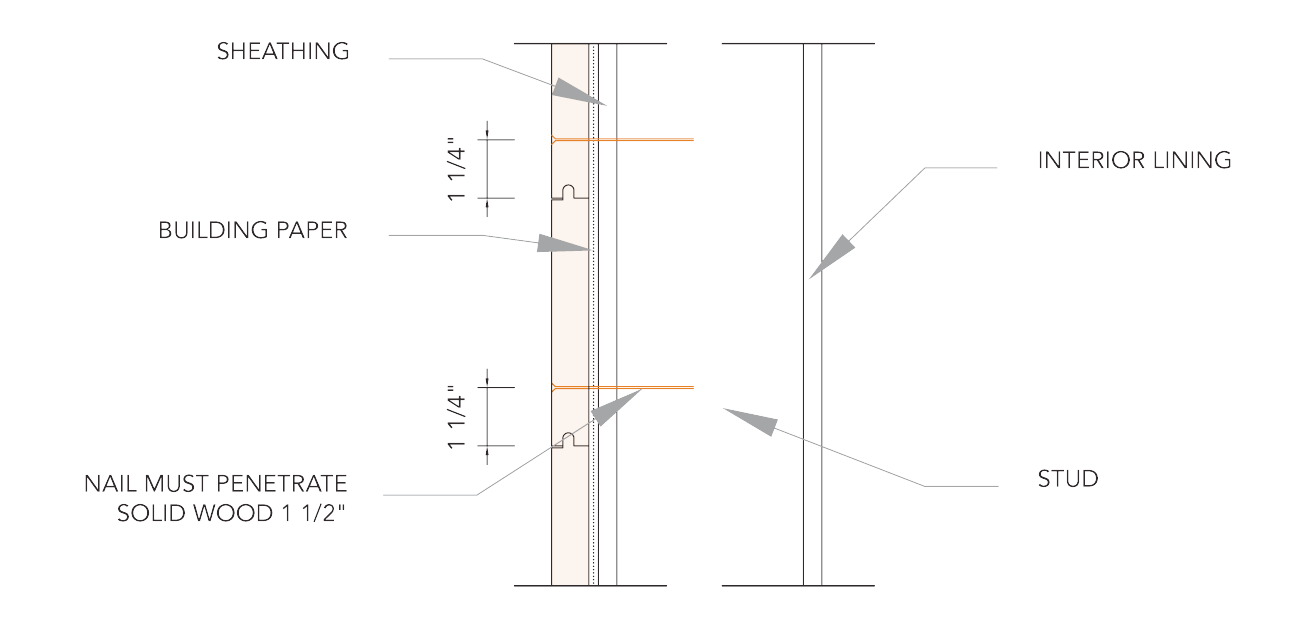
Face nail with one 2 1/2″ nail.
Horizontal 8″ and above Tongue and Groove Siding Section
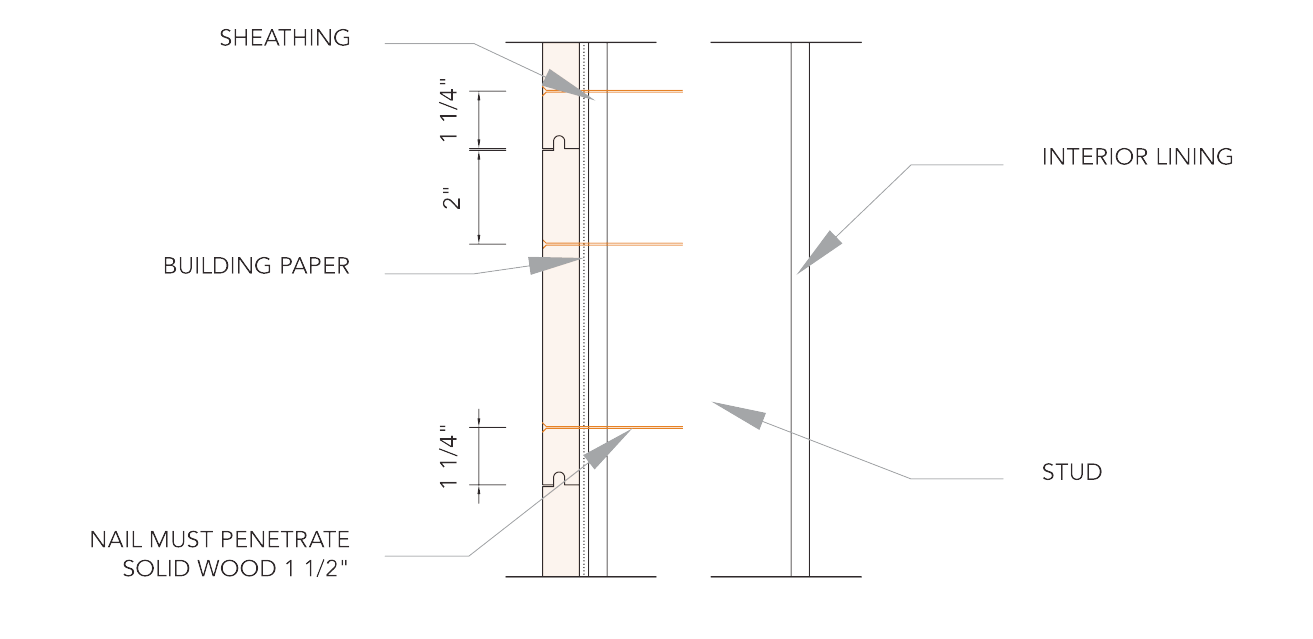
Face nail with two 2 1/2″ nails.
When fixing, ensure the groove is positioned at the bottom of the siding. For horizontal fixing, nail through siding into each stud line.
Nailing should not exceed 24” centers in the horizontal plane. For vertical fixing, nail through siding into each blocking line. Alternatively vertical siding can be nailed to 1” x 3” furring strips and solid wood sheathing. Nailing in both vertical applications should not exceed 24” centers in the vertical plane.
Board & Batten
Vertical 4″ + 6″ Board and Batten Siding Plan
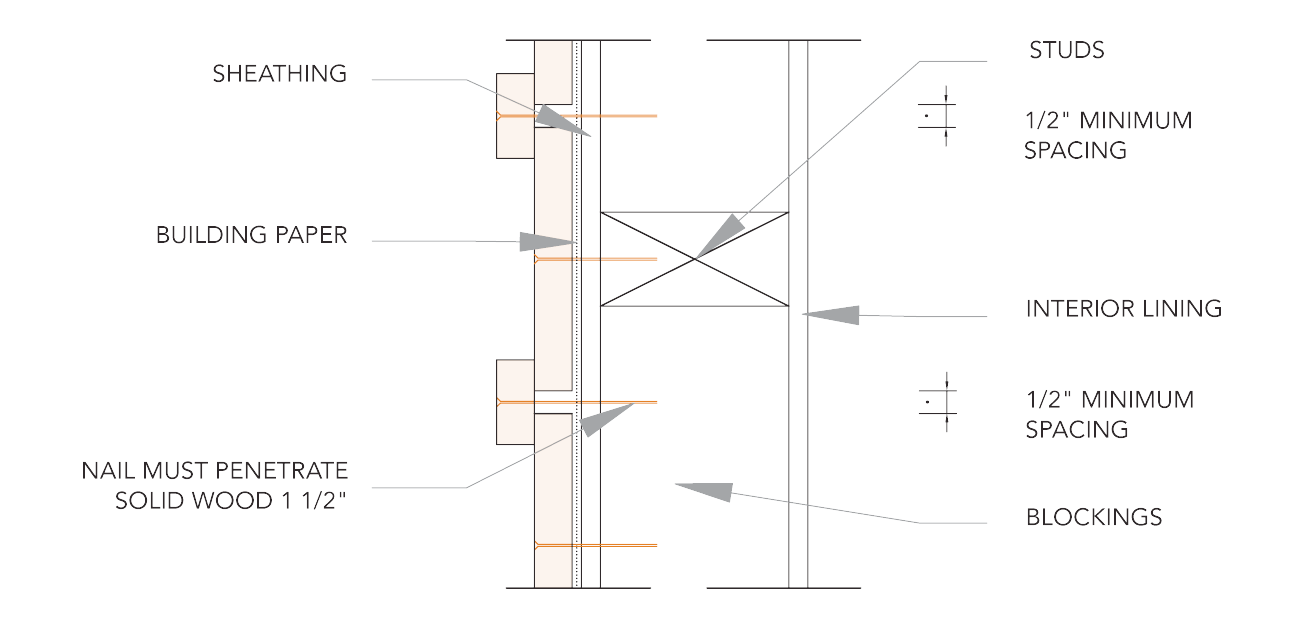
Face nail through center of batten and siding.
Vertical 8″ + Over Board – Board & Batten Siding Plan
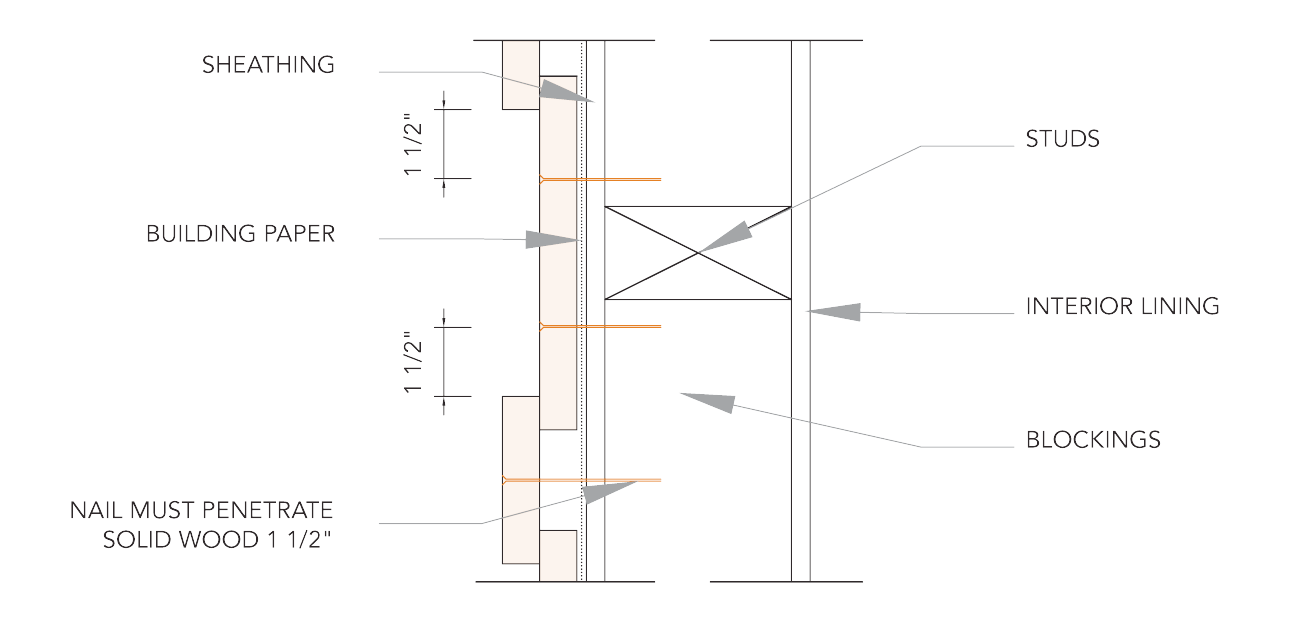
Face nail through center of batten and double nail siding.
This form of siding should only be applied vertically.
Battens must lap the underboard at a minimum of 1/2” both sides. Nail board or batten into each blocking line. Alternatively the board and batten can be nailed to 1” x 3” furring strip and solid wood sheathing. In both these vertical siding applications, nailing should not exceed 24” centers in the vertical plane.
Bevel and Rabbeted Bevel Sidings
6” to 8” Rabbeted Bevelled Siding
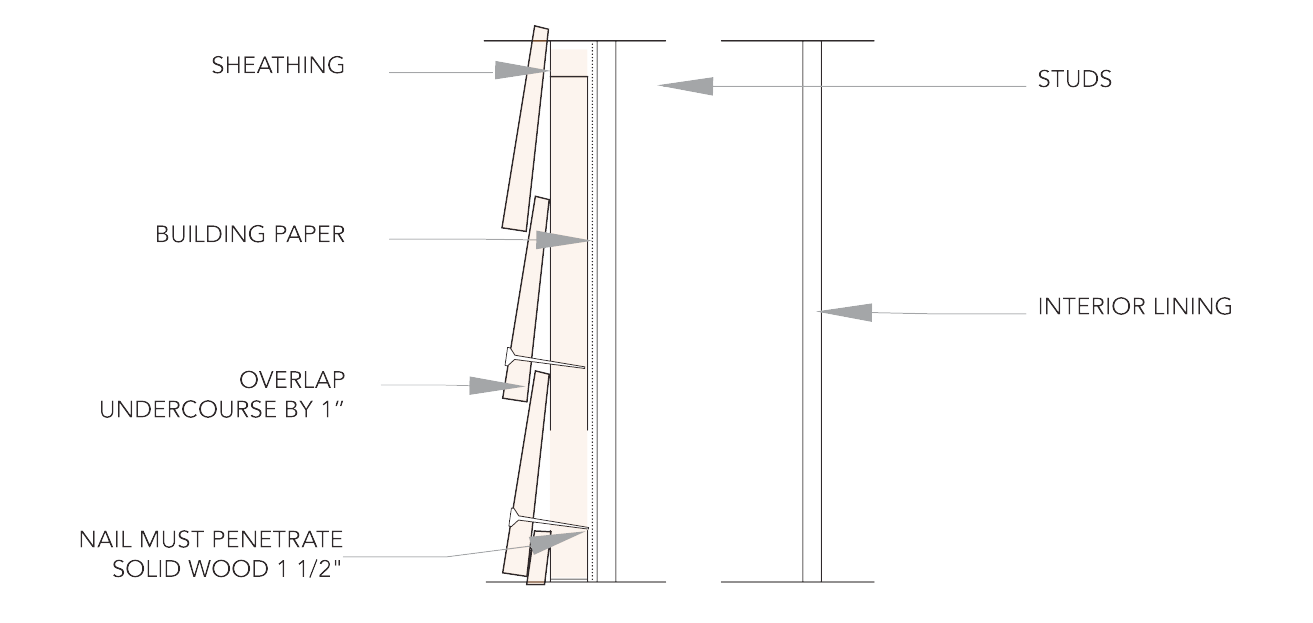
Face nail through siding above the lap.
6” to 10” R/S Back Siding

Face nail through siding above the lap.
This form of siding should only be applied horizontally. For horizontal fixing, nail through siding into each stud.
Nailing should not exceed 24” centers in the horizontal plane.
8” to 10” Bevel Channel Siding

Face nail through siding above the lap.
This form of siding should only be applied horizontally. For horizontal fixing, nail through siding into each stud.
Nailing should not exceed 24” centers in the horizontal plane.
6 “ to 8” Nickel Gap Siding
 Face nail through siding above the lap.
Face nail through siding above the lap.
This form of siding should only be applied horizontally. For horizontal fixing, nail through siding into each stud.
Nailing should not exceed 24” centers in the horizontal plane.
6” to 10” V Rustic Siding

Face nail through siding above the lap.
This form of siding should only be applied horizontally. For horizontal fixing, nail through siding into each stud.
Nailing should not exceed 24” centers in the horizontal plane.
